HAVING TROUBLE GETTING THROUGH ON OUR MAIN NUMBER ABOVE?
TRY 502-484-5550 or 0704
Cicoria PLOT 2375 Thresher
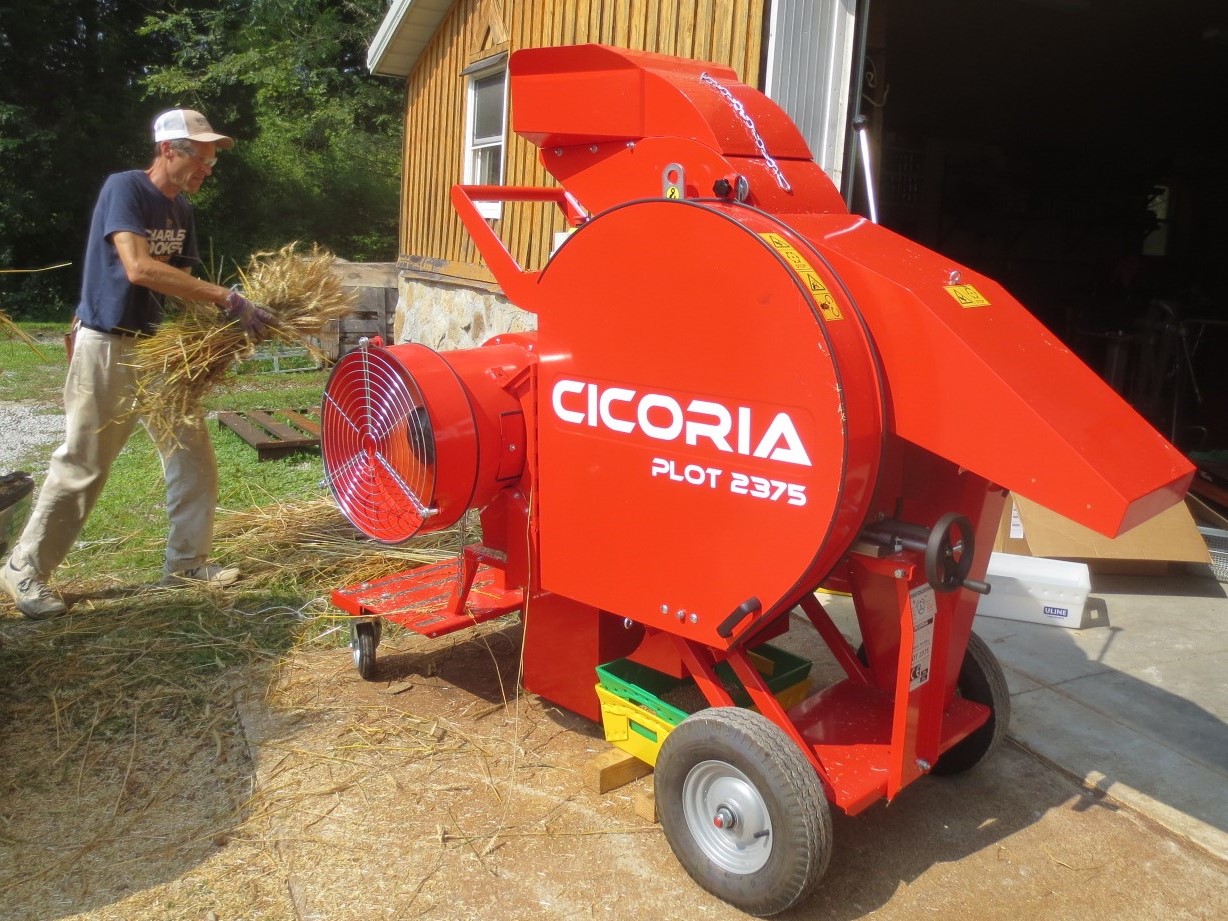
Cicoria PLOT 2375 Threshing Wheat
Small-scale Threshing Machine works for crops ranging from Millet to Lima Beans, and also works for most vegetable seed. To complement the BCS 622 Reaper-Binder, we are now importing the Italian-made Cicoria PLOT 2375 threshing machine to North America. This well-made machine comes with 9 different size “screens” which allow the threshing of crops ranging in size from Quinoa / Millet to Wheat / Barley / Rye / Oats to dry beans all the way up to Lima Beans. It can also be used to defoliate some herbs (oregano, thyme, sage, mint, etc…plants where the leaves grow on “stalks”), AND for seed separation / removal of many vegetable seeds, such as: Carrot, Lettuces, Cole crops (kale, broccoli, etc.), Radish, Swiss Chard, Basil, Turnip, Fennel, Spinach, and other vegetables where the seeds are in dry clusters or dry pods.
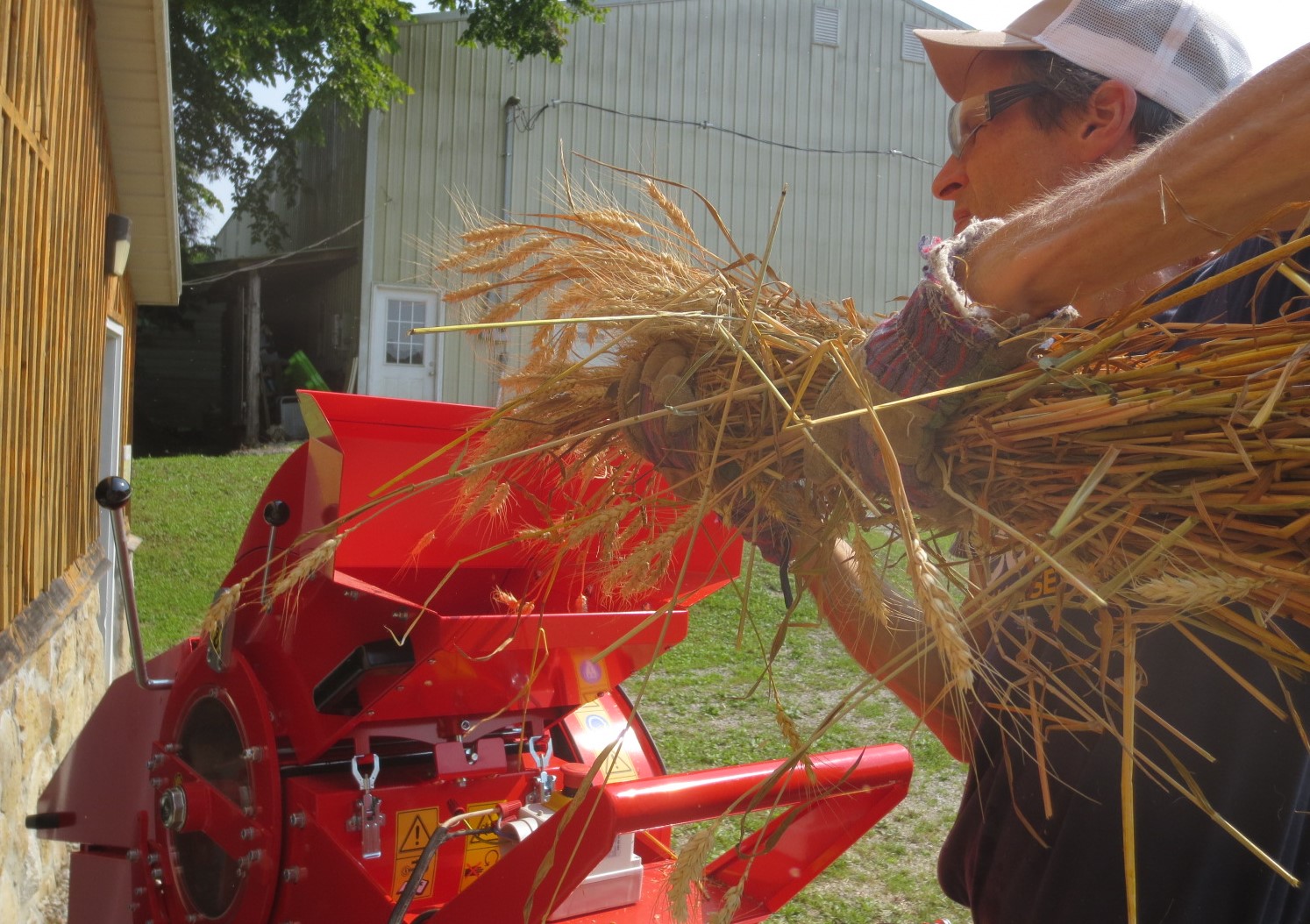
Wheat being fed into the input hopper
Material is fed into a hopper on the top of the unit, which goes into the “beater” chamber where spinning hammers knock the crop loose from the stalks and break the outer hulls / pods. The beater speed is adjustable somewhat through a variable-speed pulley.
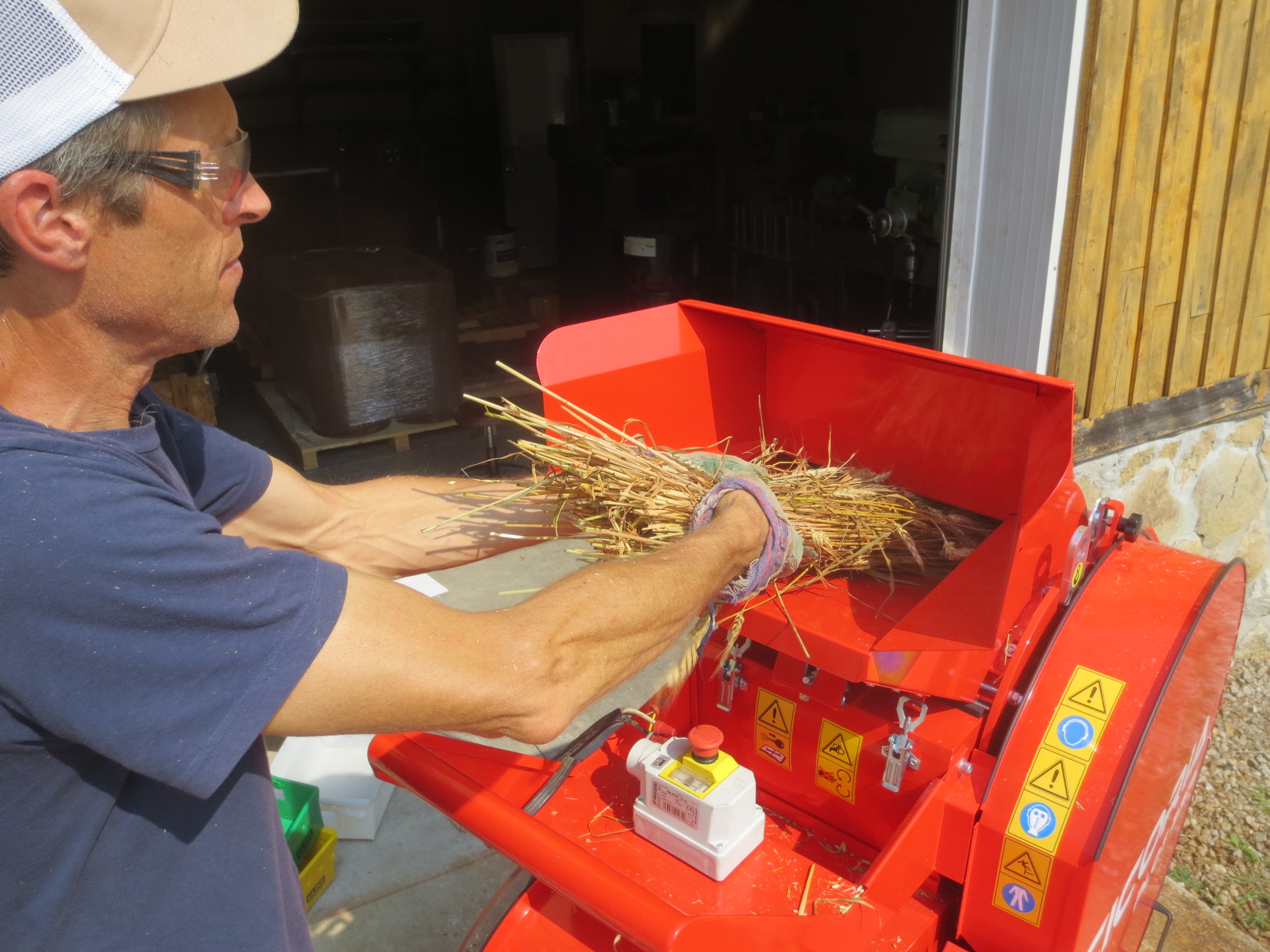
Holding the stalks while the heads
are removed by the "beater"
If the grain heads are still attached to the stalks, the operator holds the bundle of stalks while the beater removes the heads. (You COULD let the stalks just go into the beater chamber…but this takes longer to process, since it has to grind up the stalks…and you will get a lot more stalk fragments in the finished grain) Another option is to chop the heads off the grain bundles, and then you can just dump them into the beater chamber. Dry beans are fed into the beater chamber inside the pods…the thresher has no problem dealing with the pods. NOTE: In case you feed too large a bundle into the beater chamber and plug it, there is a lever which “dumps” the beater chamber through a separate chute, to clear it out.

Watching the fan seperate the chaff through the
clear Plexiglass shield (Catch-bin for "Light material" [which
would be the chaff or hulls in the case of cereal grains or dry beans]
is on lower right side)
The beater chamber discharges the material into the “separation” area, where a balance between air speed (adjustable by two louvers) and seed / grain / bean “mass” serve to separate most of the “light” chaff from the “heavier” grain / bean. (NOTE: This thresher is not necessarily sold as a “winnower”…but, adjusted properly, it does a HECK of a good job separating most of the chaff!) You can actually watch the separation take place, since the whole panel on one side of the chamber is Plexiglass!
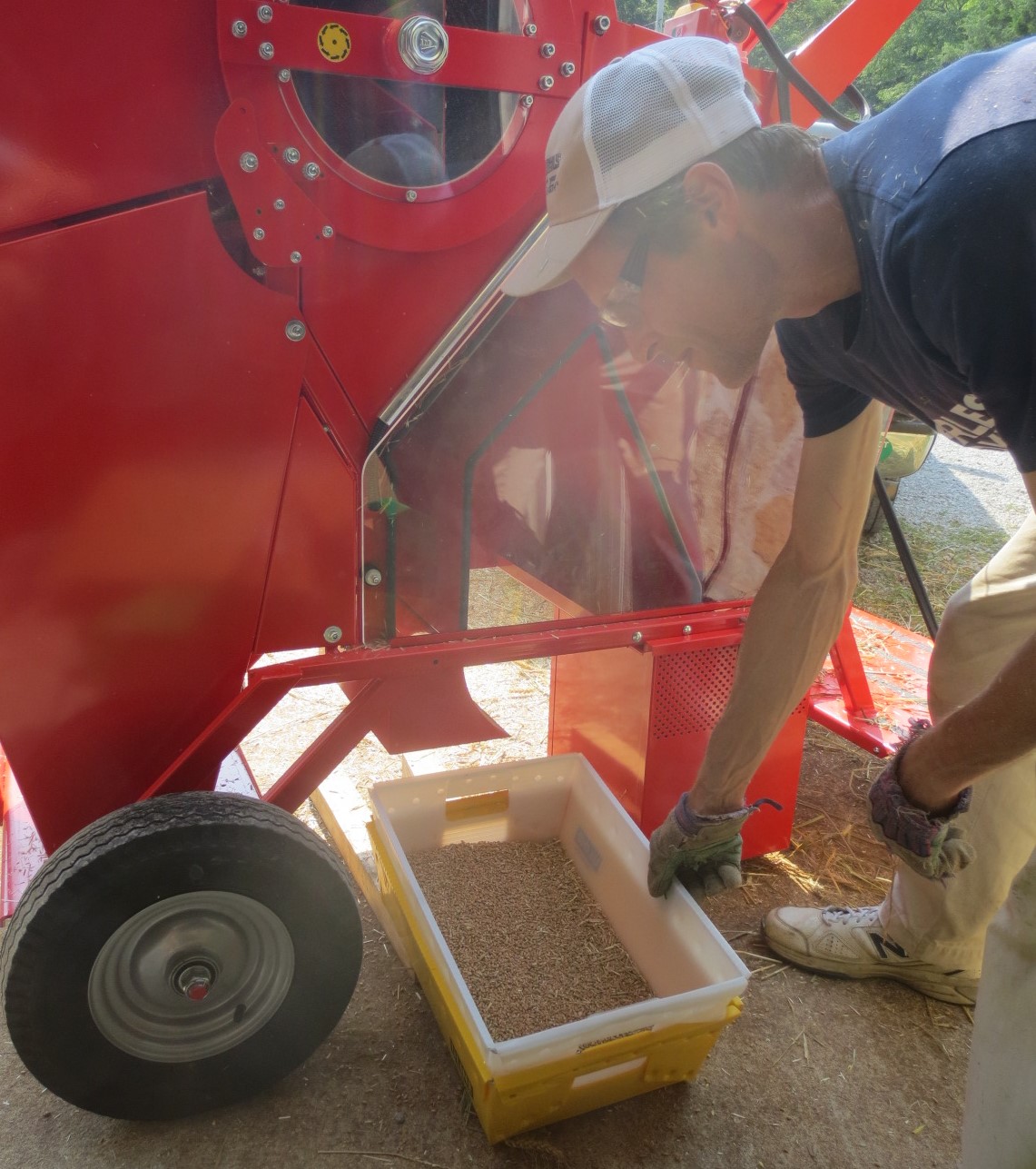
Finished grain or bean ("heavy" product)
comes out bottom
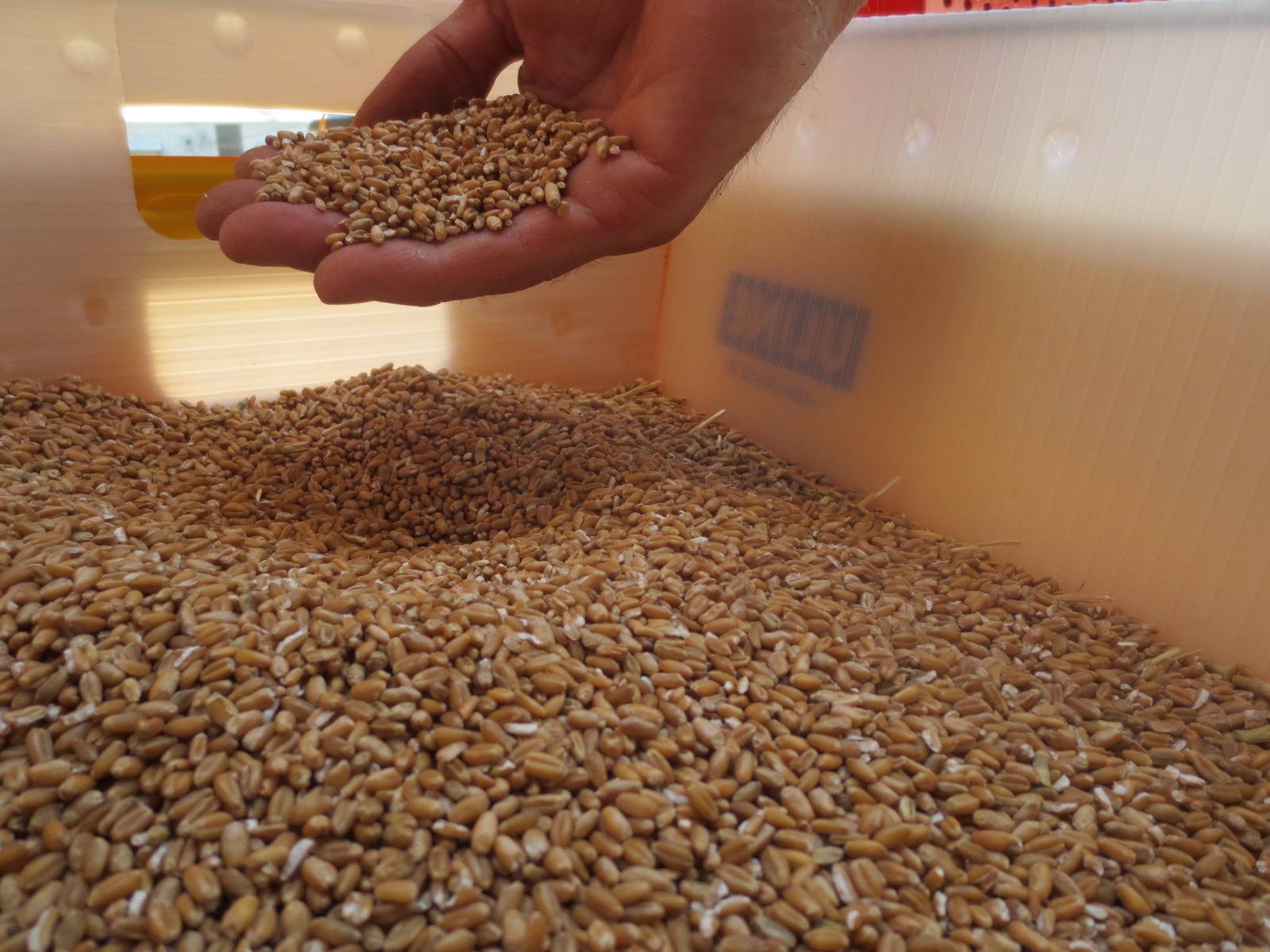
Wheat
The “heavier” material is dropped out the center-chute at the bottom of the machine (catch bin for this chute NOT included), while the “lighter” material goes into a removable bin (included) beneath the fan area. You will want to make a few test runs with whatever crop you are threshing, to get all the adjustments “optimal” so it does the best job removing the chaff AND does the least damage to the final product. (if too much chaff is present in the grain or bean, sometimes you can “tweak” the adjustments and dump it back through the machine to separate more chaff)
As mentioned above, the thresher “winnows” (separates the grain / bean from the chaff) by air velocity vs. seed mass. Therefore, it has a hard time telling the difference between a grain of wheat and, say, a “knuckle” from the wheat stalk…both are roughly the same weight and wind resistance. This is a good reason to try to put as little stalk material into the beater chamber as possible. We notice that with dry beans, the winnowing process is almost PERFECT, because there is a huge difference between the mass of a bean and the pieces of bean pod.
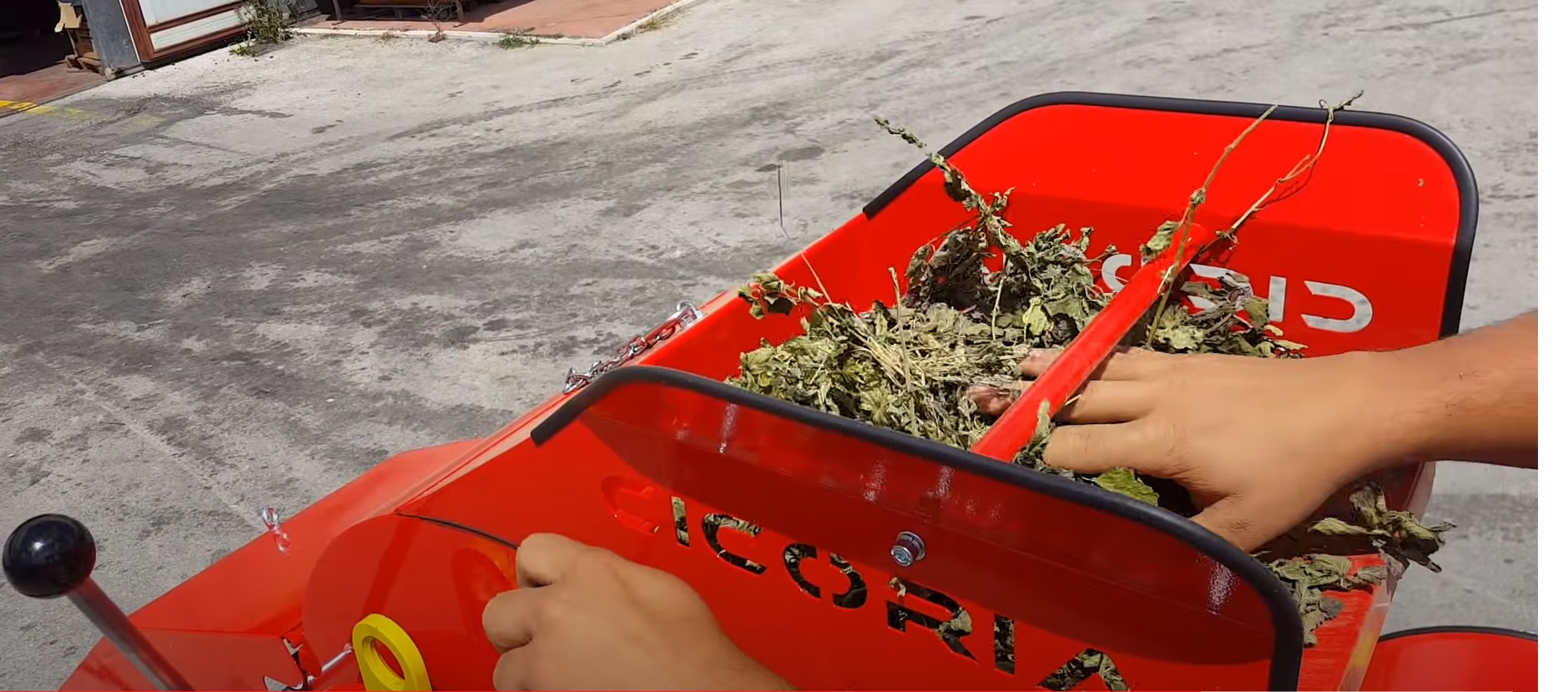
Feeding dried herb plants into thresher
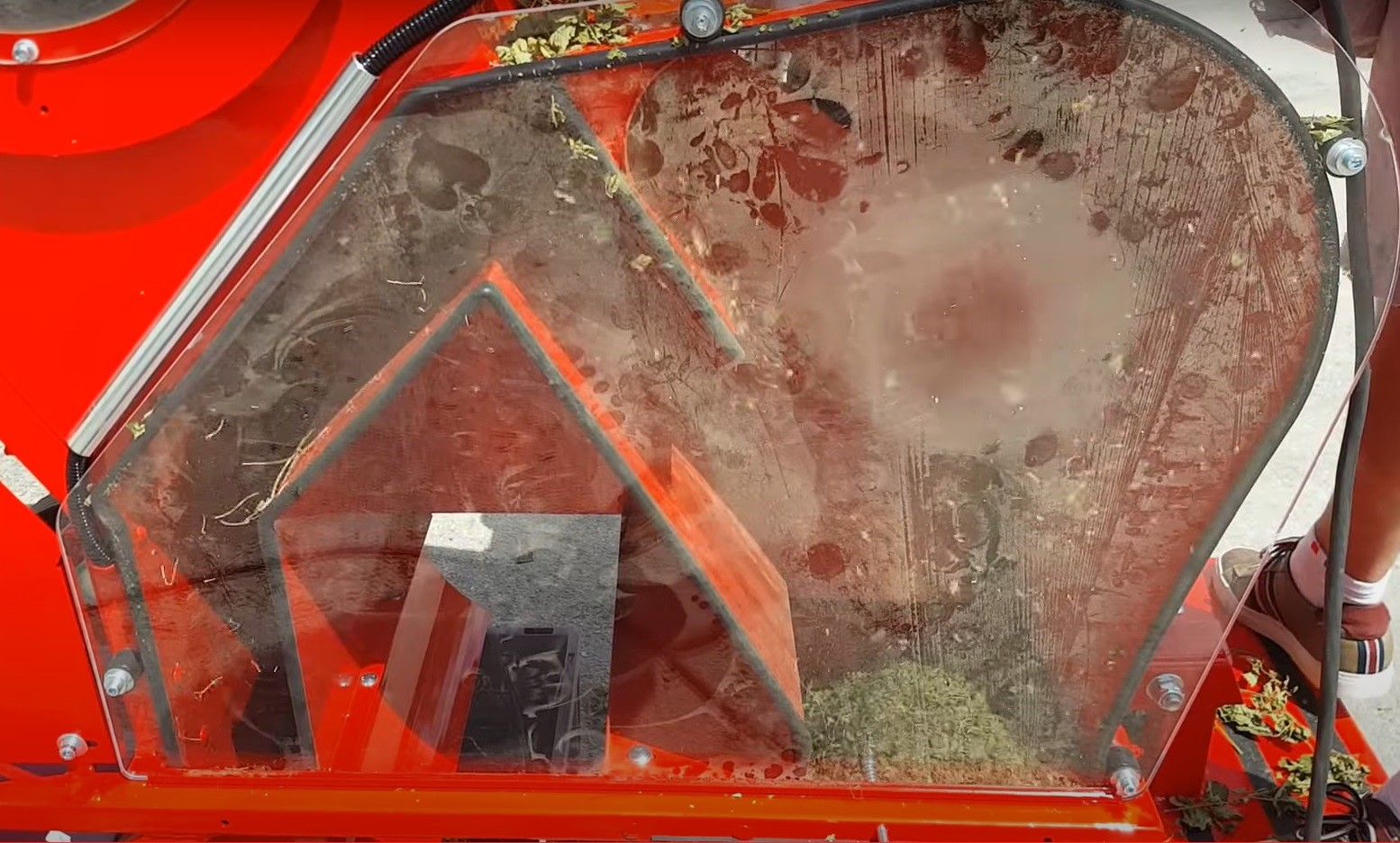
Heavier "stems" going into LH bin,
lighter "leaves" going into RH bin
The unit also does an impressive job defoliating dried herbs (removing the dry leaves from plant stems). In this case, the “light” material is what you want to KEEP, so the locations of the “good product” and “waste” bins are reversed (the lighter leaves [“good product”] now goes into the “lighter material” bin, while the heavier stems [waste product] end up in the “heavy material” bin). NOTE: if the plants are “woody perennials” with actual wood branches, you cannot put the entire branch in…you would have to insert the branches and hold them while the “beaters” stripped the leaves off.
Videos:
Watch: Cicoria Thresher - Electric model - intro & threshing cereal grain (Video 1)
Watch: Cicoria Thresher - more tips for threshing cereal grain (Video 2)
Watch: Cicoria Thresher - Gas model - Intro & Features
Watch: Cicoria Thresher - Gas model - Threshing Dry Beans
Watch: Cicoria Thresher - Electric model - De-foliating Herbs
Prices
Cicoira PLOT 2375 Thresher with 9 screens, with 9.5hp Kohler Gas Engine: MSRP:
$17,270Earth Tools Sale Price $13,800Cicoira PLOT 2375 Thresher with 9 screens, with 230 volt Single-Phase Electric Motor (requires at least a 20-amp 230V receptacle): MSRP:
$17,270Earth Tools Sale Price $13,800
Specifications
| Engine Type | Kohler CH395 9.5hp manual start Gas engine OR 230V single-phase electric motor |
| Drive type | Belt drive to beater chamber and fan; adjustable pulley for beater allows speed adjustment (also adjustable through motor speed adjustment) |
| Screens | 9 different sizes, all included |
| “Beater” drum | With 3 rows of hardened blades |
| Chaff Catch Bin | 1 cubic foot (about a bushel); easily removable for emptying |
| Safety Features | Instant shutdown button at operator position, Gas model has clutch to disengage power to mechanisms |
| Weight | 550 lbs |
| Dimensions | 44” wide x 83” long x 69” tall |










